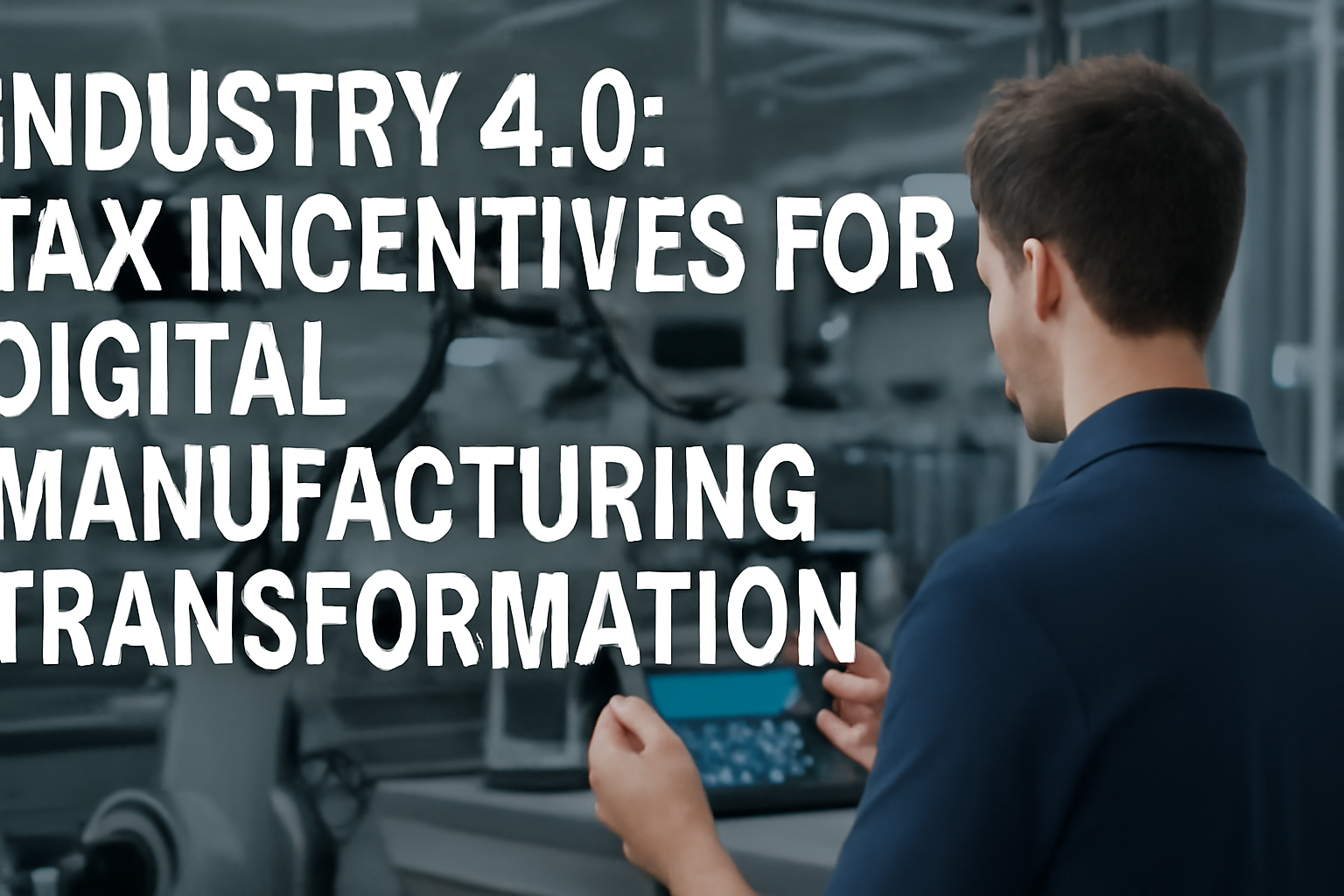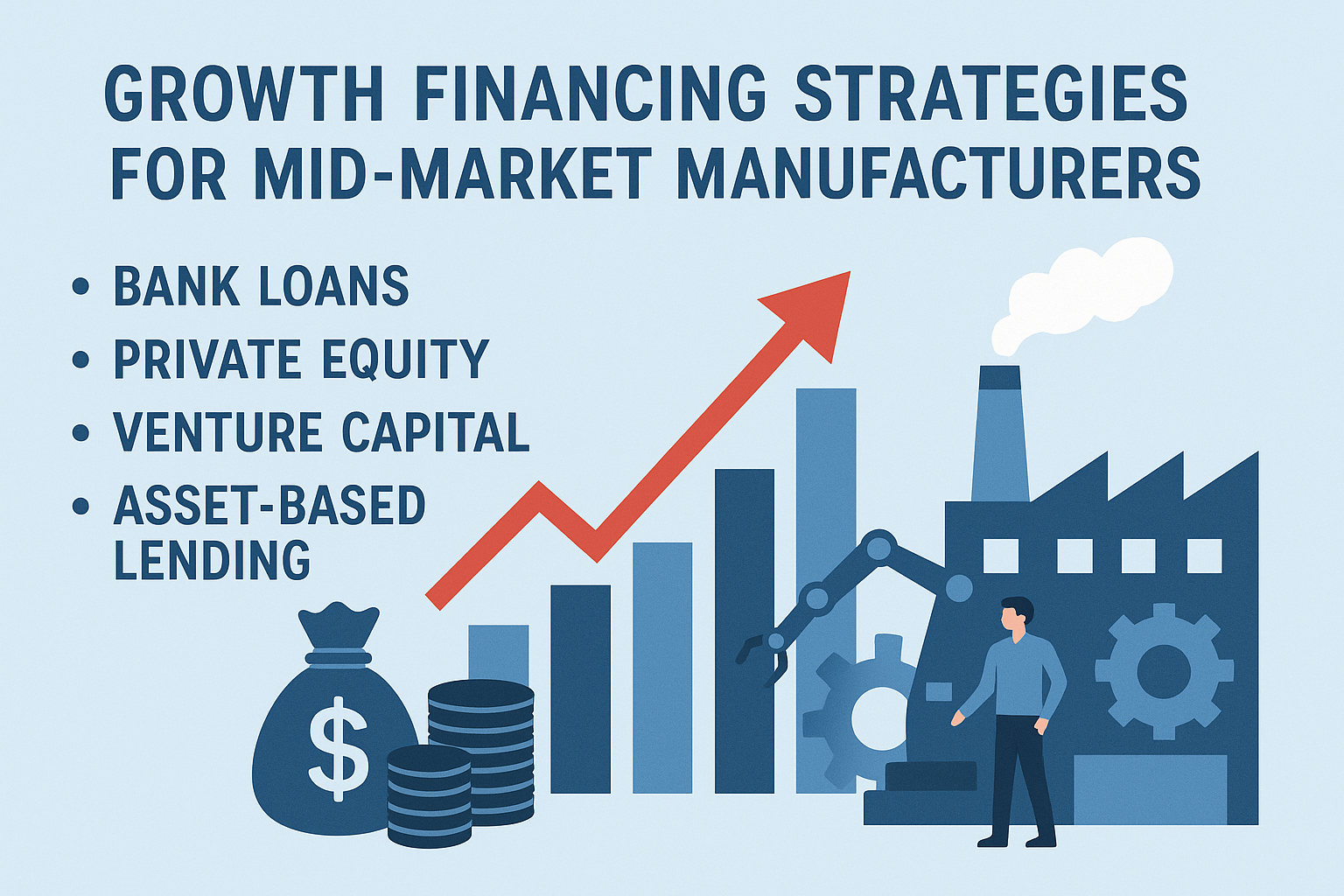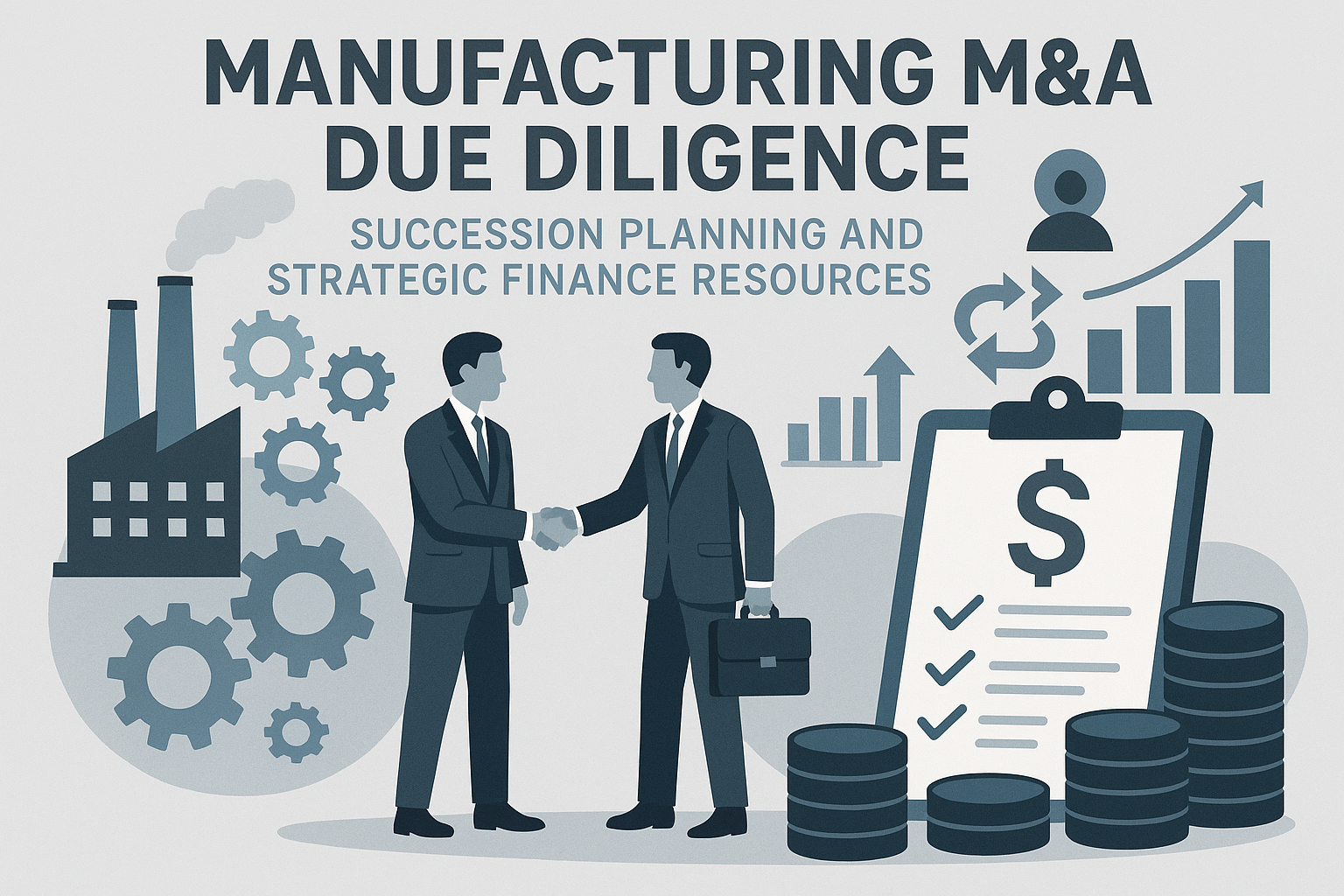
Industry 4.0: Tax Incentives for Digital Manufacturing Transformation

Sarah Johnson
R&D Tax Credit Specialist
The fourth industrial revolution, commonly known as Industry 4.0, is transforming manufacturing through the integration of digital technologies, automation, and data analytics. As manufacturers invest in these technologies, various tax incentives can help offset costs and accelerate the return on investment.
Key Technologies Driving Manufacturing Transformation
Industry 4.0 encompasses several advanced technologies that are reshaping manufacturing operations:
- Internet of Things (IoT) sensors and connected devices
- Advanced robotics and automation
- Artificial intelligence and machine learning
- Digital twins and simulation software
- Additive manufacturing (3D printing)
- Augmented reality for maintenance and training
- Cloud computing and edge computing infrastructure
Federal Tax Incentives for Technology Investments
Research & Development Tax Credits
Many Industry 4.0 implementation activities qualify for the federal R&D tax credit, including:
- Development of custom software integrations
- Process improvements through automation
- Testing and validation of new manufacturing methods
- Integration of IoT systems with existing equipment
- Development of algorithms for predictive maintenance
Section 179 Deduction and Bonus Depreciation
Manufacturers can leverage accelerated depreciation provisions for qualifying equipment:
- Section 179 allows for immediate expensing of up to $1,160,000 of qualifying equipment (2025 limit)
- 100% bonus depreciation for qualified property placed in service before January 1, 2026
- Both provisions apply to both hardware and qualifying software investments
State and Local Incentives
Many states offer additional incentives for manufacturing technology investments:
- State-level R&D tax credits (often more generous than federal)
- Manufacturing equipment sales tax exemptions
- Property tax abatements for new technology implementations
- Workforce development grants for training on new technologies
- Specific Industry 4.0 adoption incentive programs
Strategic Approach to Maximizing Incentives
To maximize available incentives, manufacturers should:
- Plan Investments Strategically: Structure technology investments to maximize qualifying expenditures.
- Document Development Activities: Maintain thorough documentation of all R&D activities related to technology implementation.
- Coordinate Timing: Consider the timing of investments to optimize tax benefits across multiple years.
- Evaluate State Incentives: Research location-specific incentives that may influence where to implement certain technologies.
- Consider Alternative Financing: Explore how leasing versus purchasing affects available tax benefits.
Case Study: Precision Machining Company
A precision machining company invested $2.3 million in advanced robotics, IoT sensors, and manufacturing execution system (MES) software. Through strategic tax planning, the company was able to claim $380,000 in federal and state R&D tax credits and accelerate depreciation deductions, resulting in first-year tax savings of approximately $650,000—reducing the effective cost of their digital transformation by 28%.
Conclusion
As manufacturers embrace Industry 4.0 technologies, tax incentives can significantly reduce the net cost of these investments. By incorporating tax planning into technology investment decisions, manufacturers can accelerate their digital transformation while optimizing their tax position. Contact Schapira CPA to develop a comprehensive tax strategy for your Industry 4.0 initiatives.


